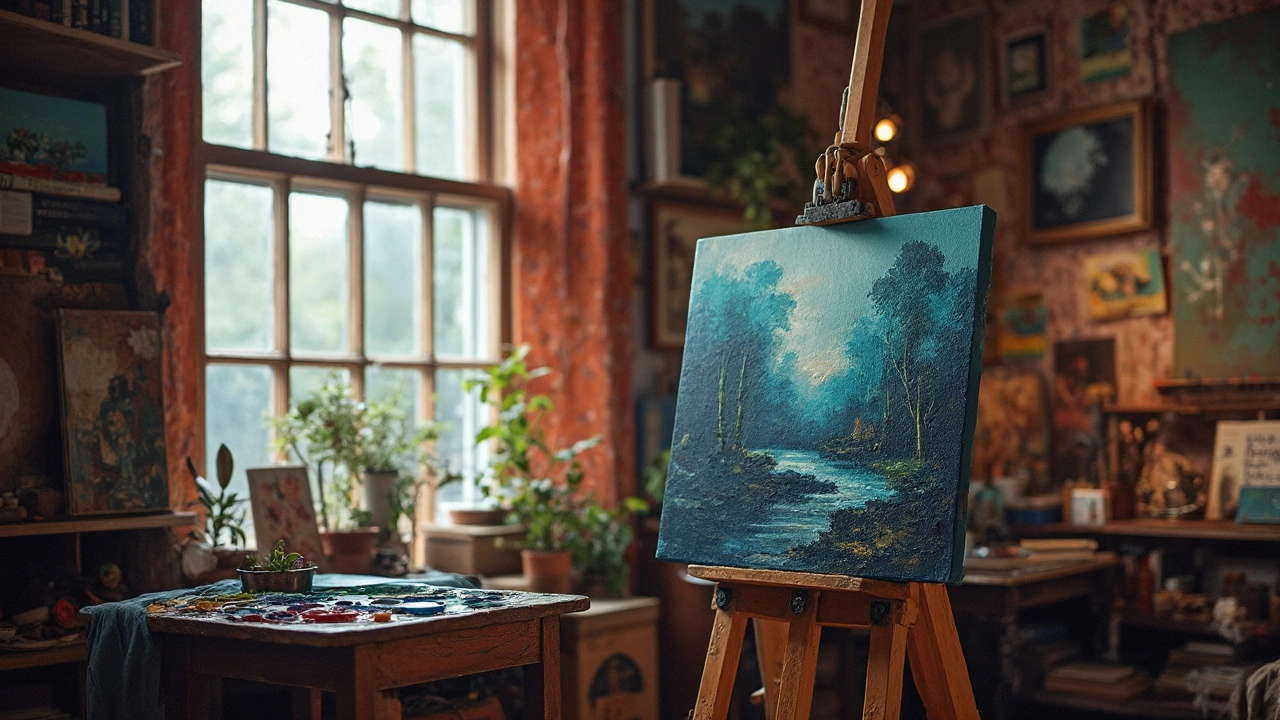Starting with Dark or Light: Easy Tips for Better Art
If you’re stuck on whether to begin a piece with dark tones or light ones, you’re not alone. Many artists wonder how the first colour choice shapes the whole work. The good news? You can use a few simple tricks to make that decision fast and keep the rest of the process smooth.
Why Dark and Light Matter in Art
Dark and light are more than just shades – they set mood, guide the eye, and help you tell a story. A dark background can make a bright subject pop, while a light base can give a soft, airy feel. Think of a night sky with a bright moon; the darkness makes the moon shine. The same idea works for portraits, still‑life, and abstract pieces. Choosing the right starting tone can also save you time because you’ll need fewer corrections later.
Another reason to plan your first tone is colour mixing. Starting dark lets you add lighter layers on top without losing depth. Starting light means you’ll need to add darker glazes or pigments to create contrast. Knowing which direction you want to go helps you pick the right paints, brushes, and even canvas texture.
Practical Tips to Start Your Dark or Light Project
1. Test a small swatch. Before you cover the entire canvas, dab a few squares with the colour you’re thinking about. Step back and see how it looks in the room’s light. If it feels too flat, add a hint of the opposite tone.
2. Choose a limited palette. Pick three to five colours that work well together. For a dark start, include a warm mid‑tone and a bright accent. For a light start, add a deeper shadow colour you can mix in later.
3. Use a value sketch. Sketch the main shapes with a charcoal or light pencil, then shade them with a grey wash. This gives you a roadmap of where the dark and light areas will be, so you can decide which tone to lay down first.
4. Think about the medium. Oil paints stay wet longer, so you can blend dark into light easily. Acrylic dries fast, so start light and add dark glazes after the first layer sets. Watercolour works best when you start light and build darker washes on top.
5. Let the background guide you. Paint a thin wash of the colour you want to dominate – either a deep blue for night scenes or a pale yellow for sunrise. Once it dries, add the main subject. You’ll notice the background already sets the mood, so you don’t have to fight against it later.
Finally, don’t stress about getting it perfect the first time. Many artists wipe a dark area clean and start again, or they add a light glaze over a mistake to turn it into a highlight. The key is to stay flexible and let the painting evolve.
Whether you choose a dark base or a light one, the most important thing is to keep the process moving. Use these quick checks, stick to a small palette, and let the medium do some of the work for you. Soon you’ll see a clear pattern in how you approach new projects, and the "dark or light" decision will become second nature.
Ready to try? Grab your brushes, pick a tone that feels right, and start painting. You’ll be surprised how much easier the rest of the piece becomes when the first colour sets the right vibe.

1 Apr 2025
Figuring out whether to start with dark or light can be confusing for beginner oil painters. This article explores the reasons behind each approach, breaking down common techniques and offering practical tips. Learn how the choice can affect your painting's mood and depth. Plus, unlock secrets from well-known artists to inspire your creative journey. Make your oil painting process more enjoyable and satisfying with these insights.
Continue reading...
